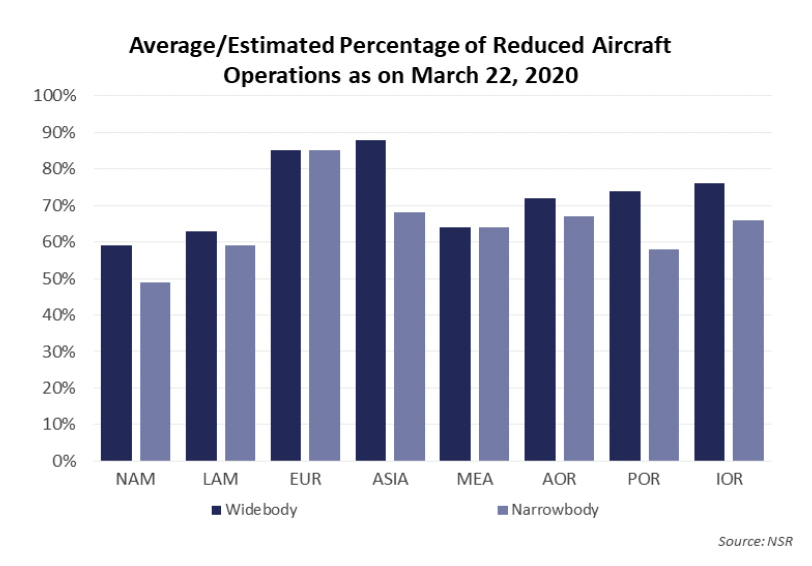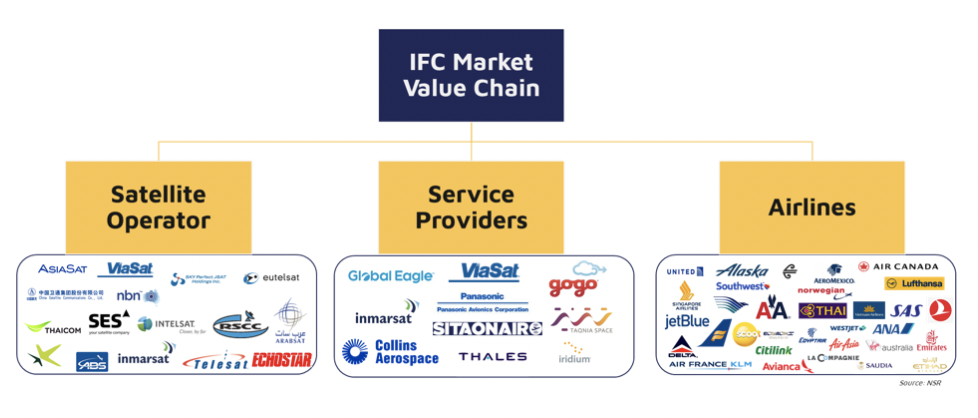Finally Time for IFC Consolidation?
Historically, companies that made significant acquisitions during crisis outperformed those that did not. Of late, the Satcom Industry has been navigating through financial distressed scenarios, and the Aero Satcom market was considered as one the major opportunity verticals for satellite operators and service providers for scaling topline and improving profitability. But in the last 3-4 months, the COVID-19 global health crisis has changed everything, at least for the next 18 to 24 months, forcing stakeholders to shift from business scaling strategies to risk mitigation measures. In the last few months, the Aviation industry has become slimmer and with the ongoing pandemic, the trend is likely to remain for some time. Consequently, it is raising questions on the coexistence of all Aero Satcom players in the value chain. So, has this crisis finally unlocked the favorable Merger & Acquisition scenario leading to a consolidated IFC market?
To answer the above question, let’s investigate the major factors driving possible consolidation scenarios.

First, user market shrinkage is leading to loss in revenue opportunity. According to NSR’s Aeronautical Satcom Markets, 8th Edition report, the industry is estimated to lose $1.8 Billion in retail IFC revenues (Service + Equipment) from 2020-2022 owing to reduced operations and revised load factors. In March 2020, overall Narrowbody Commercial Aircraft operations reduced by 49% to 85%, and Wide-body Commercial Aircraft operations reduced by 59% to 88% across different regions. The trend followed with multiple Aviation market exits and OEMs reducing their production rates. The impact is certain to flow to upstream players resulting in a capacity revenue opportunity loss of $1.1 Billion from 2020-2022.
And second, distressed downstream players are treading water to survive. IFC is clearly a highly competitive market, particularly at the service provider level where most of the focus is on specialized Aero solutions. While satellite operators such as SES and ViaSat are witnessing resilient toplines owing to diversified target markets where Aero Satcom contributes <10% of total revenues per Q1 2020 earnings, service providers are facing major and immediate challenges. For instance, GoGo witnessed >20% drop in ARPA in Q1 2020.

Looking at the value chain, the AERO Satcom market is on a consolidation endgame curve. In the Pre-COVID scenario, Aero Satcom was on track to transition from Stage Scale to Stage Focus with the top three service providers (GoGo, Panasonic & Iridium) cumulating 67.7% of total market share. The other major drivers pushing the market to the next stage were the free service model, capacity/service price drops and improvement in per Aircraft Bandwidth or Data usage. The result was that regions such as the North American corridor were beginning to experience a supply crunch, and Delta’s free model was regarded as the shape of things to come for most, if not all, airlines in all regions of the globe.

However, COVID changed everything and instead of following Path ![]() , the Aero Satcom Market has moved to Point AB because of the sudden market shrinkage. Point AB is in equivalence with A and hence makes the Aero Satcom vertical more favorable for consolidation.
, the Aero Satcom Market has moved to Point AB because of the sudden market shrinkage. Point AB is in equivalence with A and hence makes the Aero Satcom vertical more favorable for consolidation.
There are two possible consolidation scenarios as most companies in their strategy development phase respond to the ongoing crisis:
- Downstream horizontal merger or acquisition: This will result in reduced competition and optimized solution for Aviation customers, which now buy from multiple players across regions and airframes. However, the seamless merger will depend on identification of efficient network/product/services and removing overlaps. On the upstream side, this will result in reduced capacity leases/contracts for satellite operators because of the reduction in their number of customers (service providers).
- Vertical Integration, i.e. Satellite Operator acquiring a Service provider or Service Provider + Equipment Supplier: Satellite Operators have been gazing and facing challenges to move downward in the value chain. The current scenario could be considered as an opportunity knock at their door. This scenario coupled with optimized solution (capacity + service interface + hardware) can lead to more affordable solutions for end customers as margins will not get added to the cost at different levels. Also, a satellite operator with global coverage can lead to an efficient scalable solution.
Bottom Line
Market consolidation must become a top priority, especially for IFC stakeholders. At present, the AERO Satcom Market is going through major challenges with the most pressing being: 1. Distressed downstream players in survival mode, and 2. User Market Shrinkage likely to continue over the next 18 to 24 months. Over the horizon, however, long-term fundamentals of the segment remain strong. Hence, the key question now is how to cross that inflexion point at the industry level or put simply, how do downstream players survive in the next 24 months and prepare for the market rebound? One of the answers is market consolidation, which will lead to a stronger value proposition/optimized value chain overcoming all segment weaknesses and challenges exposed by the global health crises. The alternative, which is for all players to tread water, will likely lead to a weaker competitive position and lower value when the rebound ensues.
